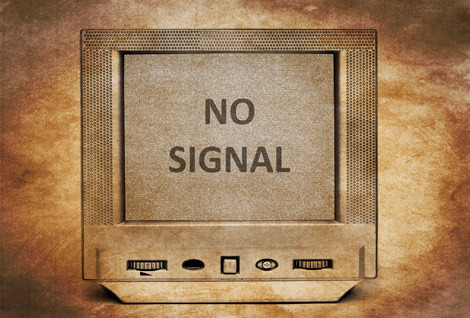Forget about your great idea.
Sad fact: bad communication kills great ideas. So, in theory, you can have the greatest idea in the world. But if you can't communicate in a clear, concise, and compelling manner? You can forget about it.
Take steel. Dick Teresi tells us in Lost Discoveries a sad story of rediscovery. The Chinese knew how to make high quality steel well over two thousand years ago. But in the West, we lost the secret, until rediscovered by Sir Henry Bessemer in 1856.
The sad part? Two years earlier, inventor William Kelly brought four Chinese steel experts to Kentucky and figured out the secrets of steel. Think of it: priceless, ancient Chinese knowledge, finally brought to the West. But the invention still became lost, because he didn't patent it but only continued working on it. Didn't test the market, in entrepreneur-speak. And then filed for bankruptcy in 1857.
However, here comes the important point we can learn from: Bessemer announced his process before a group of iron experts, which forced him to learn how to explain what he had come up with. The difference? He died rich and famous, and the Bessemer name remains forever linked to that method of steelmaking. (Sorry, China.)
And how far did steel go? In 1901, Andrew Carnegie sold his Carnegie Steel Company for about $13.3B in modern dollars. Big time.
This story happens again and again in innovation. Two very similar, simultaneous innovations, but only one survives.
Charles Darwin is credited with the discovery of evolution by natural selection, but Alfred Russel Wallace came up with the same theory at roughly the same time.
See the pattern here? Ideas are brittle. Matters not how great, they die without effective transmission. Bad communication kills them all. Just as easily as bad execution. If you want them to survive, learn how to communicate them.
As an example, consider an entrepreneur named 'Bob' who wants to tell a potential customer named 'Alice' about his great idea for a movie discovery app. Two ways he can move forward:
"Hey Alice, check this out. I've got an idea for an app that makes it easier to find great new movies to watch. They get recommended to you by a trusted series of 'friends', who constantly rate and review every movie out there. There will be lots of features around that to make sure your interests match with those of your friends. I'm also working hard on another related project that *blah* *blah* *blah* ."
He goes on and on in endless detail, never checking in with Alice to see if he's lost her. No attempt to make the message palatable. All focused around his own head and forgetting his objective of clearly transmitting his idea to Alice.
If we had to jump in and warn Alice here, what would we say? Something like:
Warning: Noise content above 90%. May cause confusion, frustration and excessive loss of time. Avoid at all costs.
Obviously, Bob can do better.
"Hey Alice. Do you have trouble finding great new movies? Okay--I think I can help here. What if you could get automatic recommendations from people you know and trust? No need to ask for them, so you'd always have plenty to choose from. Would that help?"
Before Bob says a single word, he figures out the most essential part he wants to communicate. Then he packages it with just enough detail. Constantly checking in with Alice and imagining what's going on in her mind. Result? Alice gets the idea and offers immediate feedback.
Noise content? Negligible.
Don't add to all the white noise out there. Make your ideas communicable. In theory, it can make a billion-dollar difference.
Hi, I'm Harry. Keen to build technology to help you discover ideas that work--to save you time and tears. Let's connect.
Our 2024 Coverage Needs You
It's Another Trump-Biden Showdown — And We Need Your Help
The Future Of Democracy Is At Stake
Our 2024 Coverage Needs You
Your Loyalty Means The World To Us
As Americans head to the polls in 2024, the very future of our country is at stake. At HuffPost, we believe that a free press is critical to creating well-informed voters. That's why our journalism is free for everyone, even though other newsrooms retreat behind expensive paywalls.
Our journalists will continue to cover the twists and turns during this historic presidential election. With your help, we'll bring you hard-hitting investigations, well-researched analysis and timely takes you can't find elsewhere. Reporting in this current political climate is a responsibility we do not take lightly, and we thank you for your support.
Contribute as little as $2 to keep our news free for all.
Can't afford to donate? Support HuffPost by creating a free account and log in while you read.
The 2024 election is heating up, and women's rights, health care, voting rights, and the very future of democracy are all at stake. Donald Trump will face Joe Biden in the most consequential vote of our time. And HuffPost will be there, covering every twist and turn. America's future hangs in the balance. Would you consider contributing to support our journalism and keep it free for all during this critical season?
HuffPost believes news should be accessible to everyone, regardless of their ability to pay for it. We rely on readers like you to help fund our work. Any contribution you can make — even as little as $2 — goes directly toward supporting the impactful journalism that we will continue to produce this year. Thank you for being part of our story.
Can't afford to donate? Support HuffPost by creating a free account and log in while you read.
It's official: Donald Trump will face Joe Biden this fall in the presidential election. As we face the most consequential presidential election of our time, HuffPost is committed to bringing you up-to-date, accurate news about the 2024 race. While other outlets have retreated behind paywalls, you can trust our news will stay free.
But we can't do it without your help. Reader funding is one of the key ways we support our newsroom. Would you consider making a donation to help fund our news during this critical time? Your contributions are vital to supporting a free press.
Contribute as little as $2 to keep our journalism free and accessible to all.
Can't afford to donate? Support HuffPost by creating a free account and log in while you read.
As Americans head to the polls in 2024, the very future of our country is at stake. At HuffPost, we believe that a free press is critical to creating well-informed voters. That's why our journalism is free for everyone, even though other newsrooms retreat behind expensive paywalls.
Our journalists will continue to cover the twists and turns during this historic presidential election. With your help, we'll bring you hard-hitting investigations, well-researched analysis and timely takes you can't find elsewhere. Reporting in this current political climate is a responsibility we do not take lightly, and we thank you for your support.
Contribute as little as $2 to keep our news free for all.
Can't afford to donate? Support HuffPost by creating a free account and log in while you read.
Dear HuffPost Reader
Thank you for your past contribution to HuffPost. We are sincerely grateful for readers like you who help us ensure that we can keep our journalism free for everyone.
The stakes are high this year, and our 2024 coverage could use continued support. Would you consider becoming a regular HuffPost contributor?
Dear HuffPost Reader
Thank you for your past contribution to HuffPost. We are sincerely grateful for readers like you who help us ensure that we can keep our journalism free for everyone.
The stakes are high this year, and our 2024 coverage could use continued support. If circumstances have changed since you last contributed, we hope you'll consider contributing to HuffPost once more.
Already contributed? Log in to hide these messages.

